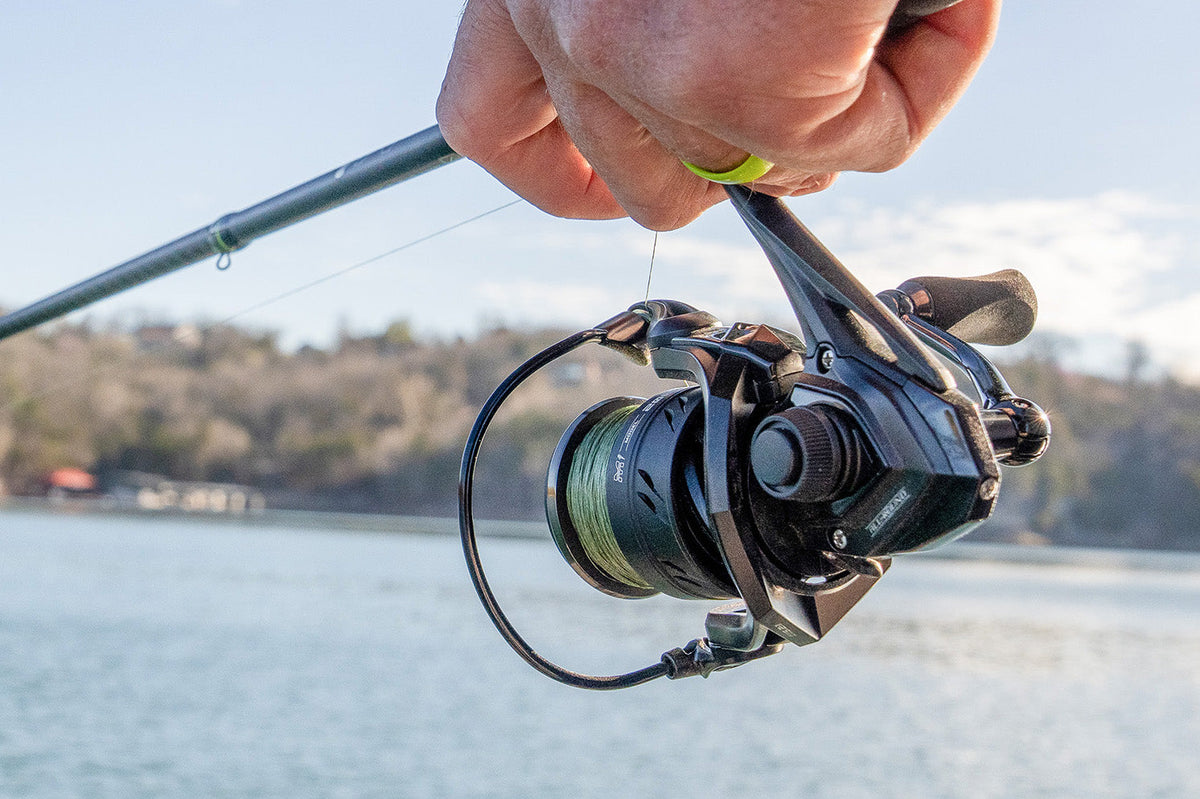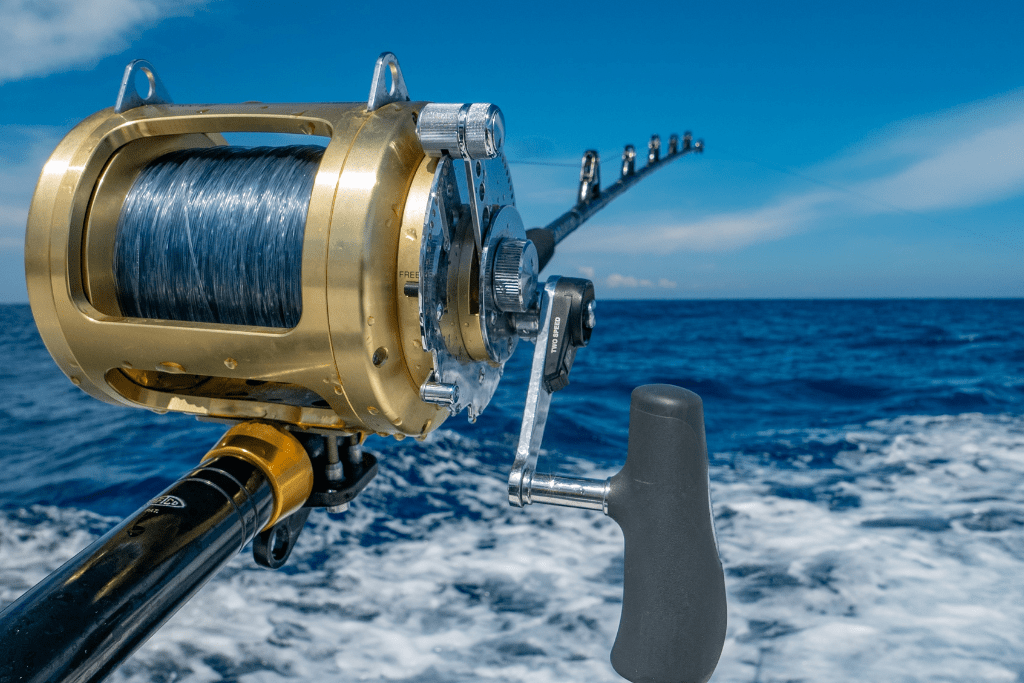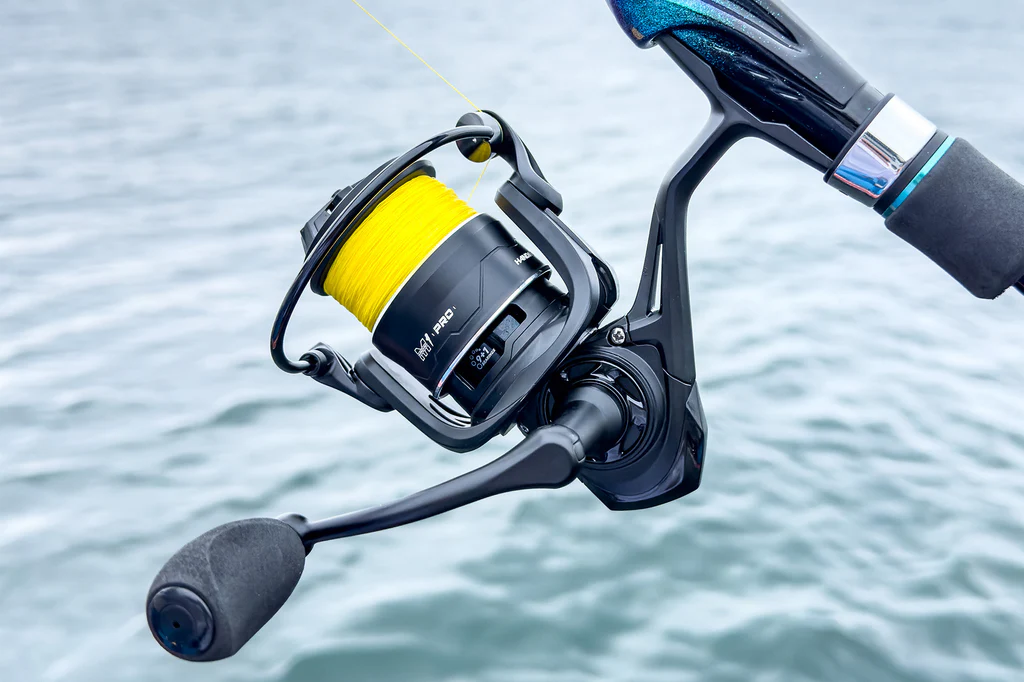News
How to Choose the Right Fishing Reel for Saltwater vs Freshwater Fishing
How to Choose the Right Fishing Reel for Saltwater vs Freshwater Fishing
Fishing is a beloved outdoor activity that offers relaxation, adventure, and the thrill of the catch. Whether you’re an experienced angler or a beginner, one of the most important decisions you’ll make is selecting the right fishing reel. The reel is crucial for the fishing experience, and choosing the right one can significantly impact your success, whether you’re fishing in freshwater or saltwater.
In this article, we will guide you through the process of choosing the perfect fishing reel for both saltwater and freshwater fishing. We will cover key factors to consider when making your selection, the differences between saltwater and freshwater reels, and the best options available on the market today. By the end of this guide, you’ll have a better understanding of how to choose a fishing reel that meets your needs, helping you make the most of your fishing adventures.
Why Choosing the Right Fishing Reel is Important

The right fishing reel not only helps you reel in fish but also plays a key role in enhancing your overall fishing experience. The type of reel you choose depends on various factors, including the water type, fish species, fishing techniques, and personal preference.
The difference between freshwater and saltwater fishing reels is significant. Saltwater reels are built to withstand the harsh, corrosive environment of the ocean, while freshwater reels are designed to be more lightweight and suited for freshwater species. Choosing the wrong reel for your fishing environment can result in frustration, poor performance, and even damaged equipment. Therefore, it is essential to understand the unique features of each type of reel and how they relate to your specific fishing conditions.
Understanding Fishing Reels: Key Components and Features
Before delving into the specifics of saltwater vs freshwater reels, let’s first break down the basic components and features of a fishing reel. Understanding these elements will help you make an informed decision about what you need from your reel.
Drag System
The drag system is one of the most important features in a fishing reel. It allows you to control the amount of tension on the line, preventing it from breaking during a fight with a fish. The drag system is especially crucial when fishing for larger fish, as it helps manage their powerful runs. Look for a reel with a smooth and reliable drag system to ensure you can land fish effectively.
Gear Ratio
The gear ratio determines how quickly the reel retrieves the line. It’s calculated by the number of spool rotations per turn of the handle. For example, a 6.4:1 gear ratio means the spool rotates 6.4 times per turn of the handle. A higher gear ratio provides faster retrieval, while a lower ratio offers more power for heavy-duty applications. Depending on your fishing style, you may prefer a high-speed or high-power reel.
Reel Size
The size of the reel is important for matching the type of fish you intend to catch. Larger reels are better suited for bigger fish and longer casting distances, while smaller reels are ideal for lighter, more finesse fishing. Consider the line capacity and how much weight you plan to fish with when choosing a reel size.
Construction and Materials
Fishing reels are typically made from materials like aluminum, stainless steel, or graphite. Reels designed for saltwater fishing need to be constructed with corrosion-resistant materials to withstand exposure to saltwater. For freshwater fishing, the materials don’t need to be as corrosion-resistant, allowing for lighter and more affordable designs.
Saltwater Fishing Reels vs Freshwater Fishing Reels: Key Differences

Now that we understand the basic features of fishing reels, let’s explore the key differences between saltwater and freshwater fishing reels. Understanding these differences will help you make the right choice based on the type of water you’ll be fishing in.
Corrosion Resistance
One of the most significant differences between saltwater and freshwater fishing reels is the level of corrosion resistance. Saltwater is highly corrosive, and exposure to it can quickly deteriorate your reel’s components. Saltwater reels are built with corrosion-resistant materials such as stainless steel, aluminum, and anti-corrosion coatings. These materials help protect the reel from rust and salt buildup, ensuring its longevity.
In contrast, freshwater reels do not require the same level of corrosion resistance, as freshwater is less harsh on the equipment. While freshwater reels are typically lighter and more affordable, they still need to be durable enough to withstand occasional exposure to water and moisture.
Durability and Strength
Saltwater fishing reels are generally more durable and stronger than their freshwater counterparts. This is because saltwater reels are designed to handle larger fish species, such as tuna, marlin, and sharks, which require more robust reel components. Saltwater reels are also built to endure the challenging conditions of the ocean, including high waves, strong currents, and saltwater exposure.
Freshwater fishing reels, on the other hand, are designed for smaller, less aggressive fish species, such as bass, trout, and panfish. While they are still durable, they don’t need to be as rugged or heavy-duty as saltwater reels. Therefore, freshwater reels tend to be more lightweight and suited for casting in calmer, less demanding conditions.
Line Capacity and Power
Saltwater reels typically have a larger line capacity than freshwater reels. This is because saltwater fishing often involves targeting larger fish that require a long line to handle powerful runs. A larger line capacity allows the angler to reel in big fish without worrying about running out of line.
Freshwater reels tend to have smaller line capacities, as the fish being targeted are generally smaller and don’t require as much line. Additionally, freshwater reels often have a higher gear ratio to provide faster retrieval speeds, which is important for casting and reeling in smaller fish.
Saltwater vs Freshwater Rod Compatibility
Another important factor to consider when choosing a reel is rod compatibility. Saltwater reels are often paired with heavy-duty rods designed to handle larger fish and harsher conditions. These rods are typically stiffer and more powerful to withstand the challenges of saltwater fishing.
Freshwater reels, in contrast, are used with lighter rods that are more flexible and suited for casting smaller baits and lures. These rods allow for more finesse fishing and provide greater sensitivity, which is essential for detecting subtle bites from smaller fish.
How to Choose the Right Fishing Reel for Saltwater Fishing

When selecting a fishing reel for saltwater fishing, you’ll need a reel that can handle tough conditions and powerful fish. Here are some key factors to consider when choosing the best saltwater reel for your needs:
Durability and Materials
Look for a corrosion-resistant reel made from materials like stainless steel, aluminum, or titanium. These materials will help protect your reel from the harsh effects of saltwater. Additionally, check for sealed bearings and waterproof drag systems to ensure smooth performance in wet conditions.
Line Capacity
For saltwater fishing, you’ll likely be targeting larger species that require a reel with high line capacity. A reel with a larger spool will give you the ability to handle longer, more powerful runs from large fish without running out of line.
Reel Type
When it comes to saltwater fishing, both spinning reels and baitcasting reels are popular choices. Spinning reels are easier to use for beginners and are great for a variety of saltwater fishing techniques. Baitcasting reels, on the other hand, provide greater accuracy and control, making them ideal for experienced anglers targeting large fish.
How to Choose the Right Fishing Reel for Freshwater Fishing
Choosing the right fishing reel for freshwater fishing requires a different approach. While the fish species in freshwater tend to be smaller, the reel still needs to be strong and responsive enough for your fishing style. Here are some factors to keep in mind when selecting a freshwater reel:
Lightness and Sensitivity
Freshwater fishing typically involves light tackle, so it’s essential to choose a lightweight reel that doesn’t weigh you down during long fishing sessions. A lightweight reel also offers more sensitivity, allowing you to feel subtle bites from smaller fish.
Reel Type
For freshwater fishing, spinning reels are the most popular choice among beginners and experienced anglers alike. These reels are easy to use and versatile, making them ideal for casting in different types of freshwater environments. If you’re targeting smaller fish like bass or panfish, a spinning reel will be more than sufficient. For more advanced anglers, a baitcasting reel can be used for precision casting and targeting larger species in freshwater lakes or rivers.
Line Capacity
While freshwater reels don’t require as much line capacity as saltwater reels, it’s still important to choose a reel with enough capacity to handle the type of fish you’re targeting. For example, light to medium power rods paired with spinning reels offer a good balance for larger freshwater species like bass, pike, or walleye.
The Importance of Reel Maintenance for Longevity and Performance
One of the most important aspects of owning a fishing reel, whether for saltwater or freshwater fishing, is proper maintenance. A well-maintained reel will not only perform better, but it will also last longer, giving you many years of enjoyable fishing experiences. Neglecting to take care of your reel can lead to reduced performance, corrosion, and even the need for expensive repairs or replacement. In this section, we will explore the importance of reel maintenance, how to properly clean and care for your reel, and tips for maintaining saltwater and freshwater reels.
Why Reel Maintenance Matters
Fishing reels are complex devices with intricate moving parts, and regular maintenance ensures that these components continue to function smoothly. The elements of a reel are exposed to varying environmental conditions, including water, dirt, and salt, all of which can degrade the materials over time. Whether you’re using a spinning reel or a baitcasting reel, ensuring that your gear is clean and well-maintained will preserve its efficiency, minimize damage, and improve your fishing experience.
Proper reel maintenance can also improve your reel’s drag system, smoothness of the spool rotation, and line retrieval—all of which contribute to more successful and enjoyable fishing trips.
Cleaning Your Fishing Reel: Step-by-Step Process
Regular cleaning is an essential aspect of reel maintenance, especially after exposure to water, dirt, and other elements. Follow these simple steps to clean both your saltwater and freshwater reels:
Disassemble the Reel
Before you begin cleaning your reel, disassemble it according to the manufacturer’s instructions. This allows you to access the internal parts, such as the drag washers, gears, and bearings, that need cleaning and lubricating. Be sure to keep track of each component so you can reassemble the reel properly.
Wash the Reel
For saltwater reels, it’s crucial to rinse them thoroughly after each use. Saltwater can be particularly damaging to reels, as the salt crystals can cause corrosion and rust. Use fresh water to rinse off any salt or debris. Be gentle when rinsing to avoid forcing water into the inner components of the reel. For freshwater reels, this step is not as critical, but it’s still important to rinse off any dirt, dust, or grime that has accumulated during fishing.
Dry and Lubricate the Reel
After washing, carefully dry your reel using a soft, lint-free cloth. Ensure that you get into all the nooks and crannies where moisture might hide. Moisture left on the reel can cause rust and corrosion over time.
Next, lubricate the moving parts of the reel with reel-specific lubricant or oil. Apply lubricant to the gears, drag system, and spool bearings. For saltwater reels, it’s essential to use a lubricant that is corrosion-resistant and designed for saltwater conditions. Lubricating these parts ensures smooth operation, extends the life of the reel, and prevents unnecessary wear and tear.
Reassemble the Reel
Once the components are dry and properly lubricated, carefully reassemble your reel. Make sure each part is properly fitted and securely tightened. If any parts are worn out or damaged, replace them before using the reel again.
Regular Inspection
Perform a regular inspection of your fishing reel before and after every fishing trip. Check for any signs of wear, corrosion, or damage to the components. Pay particular attention to the drag system, reel handle, and line guides. If any parts seem loose, damaged, or malfunctioning, it’s time for a repair or replacement.
Saltwater Reel Care: How to Protect Your Gear from Corrosion
Fishing in saltwater presents unique challenges when it comes to reel maintenance. Saltwater is highly corrosive and can quickly damage a reel if not properly cleaned and maintained. Here are some additional tips to keep your saltwater fishing reel in top condition:
Rinse Your Reel After Every Use
Saltwater reels must be rinsed thoroughly with fresh water immediately after each fishing trip. Salt crystals can accumulate in the gears, drag washers, and other moving parts, which will eventually lead to corrosion and malfunction. Use a gentle stream of fresh water to rinse off the salt, and avoid using high-pressure water, as this can push saltwater into the internal components.
Use Corrosion-Resistant Lubricants
For saltwater reels, it’s essential to use lubricants and oils designed to protect against rust and corrosion. Regularly apply corrosion-resistant lubricants to the spool bearings, drag system, and gears. This will protect the internal components from the damaging effects of saltwater and maintain smooth reel operation.
Store Your Reel Properly
After cleaning and lubricating your saltwater reel, store it in a cool, dry place. Avoid leaving the reel in a hot vehicle or exposed to humidity, as excessive heat and moisture can cause further damage to the reel’s components. Consider using a protective cover to prevent dust and dirt from settling on your reel while it’s not in use.
Freshwater Reel Care: Tips for Longevity
Freshwater reels don’t face the same level of corrosion risks as saltwater reels, but they still require proper care to ensure longevity. Here are some key tips for maintaining freshwater fishing reels:
Keep Your Reel Clean
After every fishing trip, clean your freshwater reel to remove dirt, debris, and moisture. Although freshwater is less corrosive, dirt and grime can still cause mechanical issues over time. Rinse off any accumulated mud or sand with fresh water and dry your reel with a soft cloth to prevent buildup.
Lubricate the Drag and Bearings
Ensure that the drag system and bearings are properly lubricated. Freshwater reels may not require as frequent lubrication as saltwater reels, but it’s important to keep these components smooth for optimal performance. Use lightweight reel oil to lubricate the internal parts, but be careful not to over-lubricate, as too much oil can attract dirt.
Store Your Reel Properly
Store your freshwater reel in a dry, cool place, away from excessive moisture or extreme heat. If you’re storing the reel for an extended period, it’s a good idea to cover it with a protective case to avoid dust buildup. Make sure the reel’s components are properly protected, and avoid storing it in a damp or humid environment.
Choosing the Right Reel for Your Fishing Style
While proper maintenance is essential for both saltwater and freshwater fishing reels, choosing the right reel for your fishing style is equally important. The reel type and features you select should complement your fishing technique, whether you’re casting, trolling, spinning, or fly fishing. Here are some factors to consider:
Type of Fishing
- Casting: If you prefer casting, a spinning reel or baitcasting reel is ideal for providing accurate and long-distance casts. These reels are easy to use and come in both saltwater and freshwater versions.
- Trolling: For trolling, look for saltwater trolling reels that are designed for handling large fish and deep-water fishing. These reels are built for strength and durability and are often larger in size to handle heavier lines and bigger fish.
- Fly Fishing: For fly fishing, choose a fly reel that is lightweight, durable, and designed for smooth line retrieval. Fly reels come in different sizes to match the type of fish you’re targeting, so make sure to select one based on your fishing conditions.
Rod Compatibility
Make sure your reel is compatible with the fishing rod you plan to use. Spinning reels pair best with spinning rods, while baitcasting reels are designed for baitcasting rods. Fly reels are used with fly rods, which are built specifically for fly fishing techniques.
Line Capacity
If you’re fishing in deep water or targeting larger fish, you’ll need a reel with sufficient line capacity to accommodate the extra line needed for long-distance runs. Saltwater reels typically have higher line capacities to handle larger fish, while freshwater reels can have smaller capacities for lighter fish species.
Remember, the right fishing reel is not just about performance, but also about enhancing your overall fishing experience. By selecting a durable, reliable reel and committing to regular maintenance, you ensure that your equipment performs well and lasts longer. Whether you’re fishing in the saltwater or freshwater, the care you give your reel will pay off in better catches, smoother casting, and more enjoyable fishing trips. Choose wisely, maintain your gear, and enjoy countless memorable moments on the water. So, gear up, choose the perfect reel for your needs, and embark on your next fishing adventure with confidence!
Conclusion: Take Care of Your Fishing Reel for a Successful Fishing Experience
Choosing the right fishing reel for both saltwater and freshwater fishing is crucial to ensure a successful fishing experience. By understanding the key differences between saltwater and freshwater reels, the components of the reel, and how to properly maintain your gear, you can enhance your performance and enjoy your time on the water. Regular cleaning and maintenance, along with choosing the right reel for your fishing needs, will ensure that your fishing gear lasts longer and continues to perform at its best.
Whether you’re an experienced angler or a beginner, maintaining your fishing reel and selecting the best one for your style of fishing is essential. Invest in quality equipment, take proper care of it, and your fishing adventures will be more enjoyable and productive. So, start preparing your gear, head out on the water, and experience the thrill of fishing with confidence!

